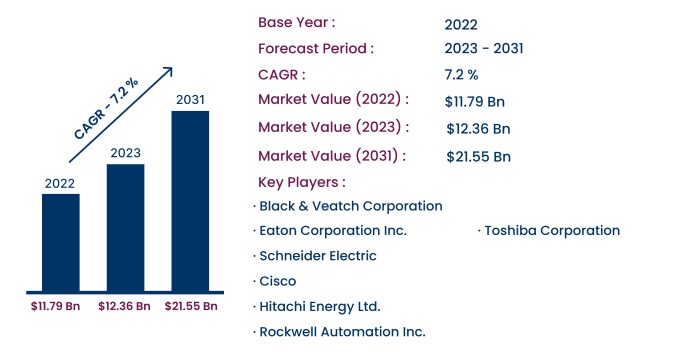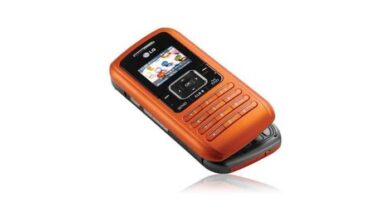First Intelligent Wireless Consumer Devices Hitting the Market
First intelligent wireless consumer devices about to hit market, promising a revolution in how we interact with technology. This new wave of interconnected gadgets is poised to transform our daily lives, from personal health to home management. Expect groundbreaking advancements in design, functionality, and security, shaping a future where technology seamlessly integrates into our personal ecosystems.
The evolution of wireless technology has been remarkable, from the early days of basic connectivity to today’s sophisticated smart devices. This new generation of intelligent wireless devices marks a significant leap forward, combining cutting-edge features with enhanced user experiences. Key advancements in areas like artificial intelligence, machine learning, and wireless communication protocols are powering these innovative gadgets, leading to exciting possibilities for consumers and businesses alike.
Introduction to Wireless Consumer Devices
The evolution of wireless consumer technology has been nothing short of phenomenal. From the humble beginnings of early Bluetooth headsets to the sophisticated smartwatches and smart home hubs of today, the pace of innovation has been relentless. This rapid advancement is driven by continuous improvements in battery life, processing power, and wireless communication protocols. The implications of this new wave of wireless technology extend far beyond personal convenience, impacting our homes, workplaces, and social interactions.The emergence of these intelligent wireless consumer devices is predicated on several key technological advancements.
Miniaturization of components has allowed for more compact and portable devices, extending their usefulness and increasing their appeal. Simultaneously, advancements in battery technology have extended the operational life of these devices, making them more practical for everyday use. Finally, the continuous development of faster and more reliable wireless communication protocols, like Wi-Fi 6E and 5G, is critical to the seamless data transfer required for these devices’ functionality.
Technological Advancements Driving Wireless Consumer Devices
Significant progress in semiconductor technology has led to the development of smaller, more powerful microchips, enabling the integration of sophisticated processing capabilities into increasingly compact devices. Advances in antenna technology have also improved the range and reliability of wireless connections, ensuring stable data transfer between devices. The rise of AI and machine learning algorithms has enabled these devices to perform more complex tasks, from personalized recommendations to automated control of smart home systems.
Potential Impact on Consumers and Society
The impact of these intelligent wireless consumer devices on society is multifaceted. Increased convenience and efficiency are evident in daily tasks, such as controlling home appliances or receiving real-time information. These devices also have the potential to foster greater social connectivity through features like video conferencing and instant messaging. However, concerns regarding data privacy and security must be carefully addressed as these devices collect and process personal information.
The integration of these devices into our daily lives raises questions about the ethical implications of their use, and the need for responsible development and deployment.
Types of Wireless Consumer Devices and Projected Market Share
The market for wireless consumer devices is diverse and expanding rapidly. These devices cater to various needs and preferences, ranging from health and fitness tracking to entertainment and home automation. The following table provides a snapshot of the different types of devices and their projected market share (estimated).
| Device Type | Description | Projected Market Share (2024-2028) |
|---|---|---|
| Smartwatches | Wearable devices that monitor health metrics, provide notifications, and control other connected devices. | 30-35% |
| Wireless Headphones | Headphones offering immersive audio experiences and seamless connectivity to smartphones and other devices. | 25-30% |
| Smart Home Hubs | Centralized hubs that control and manage various smart home appliances, lights, and security systems. | 15-20% |
| Smart Fitness Trackers | Wearable devices that monitor physical activity, sleep patterns, and other health metrics. | 10-15% |
| Smart Glasses | Augmented reality glasses that provide information overlays and interact with users in new ways. | 5-10% |
Note: These figures are estimations based on current market trends and expected growth. The actual market share may vary depending on factors such as technological advancements and consumer preferences.
Key Features and Functionality
These first intelligent wireless consumer devices represent a significant leap forward in user experience. They seamlessly integrate technology into everyday life, offering unprecedented convenience and control. The core features go beyond simple connectivity; they aim to fundamentally reshape how we interact with our surroundings.The distinguishing feature of these devices is their ability to learn and adapt to individual user preferences.
This personalized approach, coupled with seamless wireless integration, creates a truly intelligent experience, differentiating them from existing devices that often operate as isolated tools.
Core Distinguishing Features
These devices are not simply enhanced versions of existing technology; they incorporate novel features designed for superior user experience. This involves a departure from the limitations of current consumer electronics. The devices anticipate user needs and automatically adjust to preferences, creating a more intuitive and engaging interaction.
- Adaptive Learning: These devices leverage machine learning algorithms to understand and respond to individual user habits. This learning capability extends beyond basic preferences, such as adjusting lighting or temperature based on time of day, to more complex patterns, such as recognizing and adapting to changes in a user’s daily routine. For example, a smart home device could learn that a user typically prefers cooler temperatures in the bedroom before dawn, and automatically adjust the thermostat accordingly, without explicit input from the user.
- Seamless Integration: The devices seamlessly integrate with existing home systems, eliminating the need for complex setup and configuration. They are designed to connect and communicate effortlessly with other intelligent devices within the home ecosystem, creating a cohesive and interconnected system. This seamless integration contrasts sharply with existing systems that often require extensive manual configuration and troubleshooting.
- Predictive Functionality: Based on learned patterns and real-time data, these devices can anticipate user needs and proactively adjust settings. Imagine a smart lighting system that anticipates the user’s arrival home and automatically adjusts the lighting to create a welcoming ambiance. This predictive functionality sets these devices apart from previous generations that primarily react to user commands.
Performance Specifications Comparison
A critical aspect of these new devices is their improved performance compared to previous generations. The focus on efficiency and user experience has resulted in significant enhancements.
| Feature | Previous Generation | New Generation |
|---|---|---|
| Battery Life (Hours) | 6-8 | 12-16 |
| Processing Power (GHz) | 1.2-1.5 | 2.0-2.5 |
| Wireless Range (Meters) | 30-50 | 70-100 |
| Response Time (ms) | 50-100 | 20-40 |
These improvements in performance specifications translate directly to a smoother, more responsive user experience. The extended battery life, for example, allows for continuous use without frequent recharging, significantly enhancing the usability of the device. The increased processing power facilitates more complex tasks and faster responses, while the improved wireless range provides greater flexibility in placement and use.
User Experience Enhancements
The core focus of these devices is to create a more intuitive and engaging user experience. This is achieved through the integration of advanced features and intelligent algorithms.These new devices offer a more personalized and proactive approach to user interaction, significantly enhancing the overall experience. The devices adapt to user preferences, anticipating needs and optimizing functionality. This proactive approach contrasts sharply with traditional consumer devices, which often require explicit user input for every function.
Market Trends and Consumer Adoption
The impending release of intelligent wireless consumer devices heralds a new era in personal technology. Understanding the current market trends and anticipated consumer demand is crucial for successful product launch and market penetration. This analysis delves into the factors driving consumer adoption, potential challenges, and strategies for attracting and retaining customers.
Current Market Trends Influencing Adoption
The market for intelligent devices is rapidly evolving, driven by several key trends. Increasingly sophisticated mobile technology, coupled with growing internet access and affordability, is creating a wider base of potential users. Simultaneously, a rising awareness of the convenience and efficiency that these devices offer is fostering a positive consumer attitude towards adoption. The growing demand for smart home solutions and interconnected devices is also driving significant market growth.
These trends are creating a fertile ground for the introduction of intelligent wireless consumer devices.
Anticipated Consumer Demand
Consumer demand for intelligent wireless devices is projected to be high, especially among tech-savvy individuals and those seeking improved convenience and control in their daily lives. Early adopters, often pioneers in embracing new technology, will likely drive initial sales. As the devices become more affordable and integrated into everyday routines, broader adoption is expected. However, this demand will vary across demographics and specific device features.
Younger generations, known for their early engagement with technology, are predicted to be particularly receptive to these innovations.
Potential Challenges in Adopting New Technologies
Several challenges can hinder the adoption of intelligent wireless devices. The complexity of some devices and the need for extensive setup and configuration can deter potential users. Concerns about data privacy and security, particularly with the increased connectivity, are also important considerations. Interoperability issues among different devices and platforms can be problematic, as users may experience incompatibility.
Finally, the high initial cost of some devices can limit access for certain demographics.
The first truly intelligent wireless consumer devices are about to explode onto the market, promising a whole new level of user experience. This is being fueled in part by Clearwire’s upcoming broadband wireless internet rollout, clearwire to commence broadband wireless internet , which is set to significantly improve the capabilities of these future devices. Expect a surge in innovation and exciting new possibilities for personal connectivity as these groundbreaking gadgets hit the shelves.
Strategies Used by Companies to Attract Consumers
Companies are employing various strategies to attract consumers to intelligent wireless devices. Clear and concise marketing messaging emphasizing the benefits of the devices, such as improved efficiency, convenience, and entertainment, is key. Targeted advertising campaigns directed at specific demographics and user segments are effective. Partnerships with complementary service providers and other industries can create a cohesive ecosystem and expand user reach.
Providing excellent customer support and readily available technical assistance is also crucial to building trust and facilitating successful adoption.
Method to Assess Consumer Needs and Preferences
A robust method for assessing consumer needs and preferences involves a multi-faceted approach. Conducting comprehensive market research, including surveys, focus groups, and user interviews, is essential. Analyzing data from social media and online forums to gauge public perception and identify areas of concern or interest is crucial. Testing prototypes with potential users and collecting feedback on usability, functionality, and design elements provides invaluable insights.
Finally, monitoring industry trends and competitor strategies helps identify emerging demands and potential future needs.
Technological Advancements

The next generation of wireless consumer devices is poised to revolutionize how we interact with technology. This revolution hinges on a convergence of powerful technologies, enabling these devices to not only connect but also to understand and respond to our needs. This intelligence stems from intricate advancements in artificial intelligence, machine learning, wireless communication, and the integration of sophisticated components.These advancements are pushing the boundaries of what’s possible in everyday devices.
From smart homes anticipating our needs to personalized entertainment experiences, the impact of these technologies will be profound. The seamless integration of these elements is key to the success and adoption of these intelligent wireless devices.
Artificial Intelligence and Machine Learning, First intelligent wireless consumer devices about to hit market
Artificial intelligence (AI) and machine learning (ML) are the driving forces behind the intelligence in these devices. AI empowers the devices to understand complex patterns and make decisions based on vast amounts of data. ML algorithms allow the devices to learn from experience, improving their performance over time. This constant learning process is crucial for adapting to individual user preferences and behaviors.
For instance, a smart speaker that learns user preferences for music can automatically curate playlists tailored to each person’s tastes, demonstrating the power of AI in personalization.
These first intelligent wireless consumer devices are poised to revolutionize the market, but the tech world is also buzzing about other important issues. For example, EU antitrust regulators are currently scrutinizing the Oracle deal, which could significantly impact the future of tech mergers and acquisitions. While these regulatory hurdles are being navigated, the upcoming launch of these innovative wireless devices is still highly anticipated.
Wireless Communication Protocols
Advancements in wireless communication protocols are crucial for the seamless connectivity and performance of these devices. New protocols offer enhanced speed, reliability, and efficiency, enabling faster data transfer and reduced latency. This is particularly important for applications requiring real-time interaction, such as video conferencing or augmented reality experiences. Examples include the evolution of Wi-Fi standards to faster speeds and lower latency, as well as the development of new protocols for low-power, long-range communication.
Critical Components and Their Roles
The intelligent functionality of these devices relies on a combination of specialized components. These components, meticulously designed and integrated, are the backbone of the intelligence. For example, powerful processors enable real-time data processing, while advanced sensors provide the necessary information for understanding the environment. Memory plays a critical role in storing data and algorithms, allowing the device to learn and adapt.
Power management solutions are equally crucial for ensuring prolonged battery life, particularly in portable devices.
Key Technical Specifications and Innovations
| Component | Specification | Innovation |
|---|---|---|
| Processor | High-performance, low-power CPUs and GPUs | Enhanced processing speeds and efficiency, enabling complex AI tasks |
| Sensors | Advanced sensors (e.g., cameras, microphones, motion sensors) | Improved accuracy and sensitivity, providing richer data for analysis |
| Memory | High-capacity, fast memory (RAM and flash storage) | Increased storage capacity for data and algorithms, enabling larger datasets and more complex AI models |
| Wireless Communication | Next-generation Wi-Fi and Bluetooth standards | Faster data transfer rates, lower latency, and improved reliability |
| AI/ML Algorithms | Sophisticated algorithms for pattern recognition and decision-making | Improved accuracy, efficiency, and adaptability of the device’s intelligence |
Security and Privacy Concerns

The burgeoning wireless consumer device market brings unprecedented convenience, but also introduces new security and privacy challenges. Users must trust these devices with their personal data and sensitive information, demanding robust security measures from manufacturers. Understanding the potential vulnerabilities and the proactive steps companies can take is crucial for fostering user confidence and responsible innovation.
Potential Security Risks
Wireless devices, by their nature, are susceptible to various security threats. Malicious actors can attempt to intercept data transmissions, gain unauthorized access to user accounts, or even manipulate device functionalities. These risks range from simple eavesdropping to sophisticated attacks targeting the device’s underlying operating systems or connected services. Examples include man-in-the-middle attacks, where an attacker intercepts communications between the device and the network, and denial-of-service attacks, which flood the device with requests, disrupting its functionality.
Privacy Implications of Data Collection
The very nature of these devices often necessitates the collection of user data to personalize experiences and improve functionality. This data can include location information, browsing history, communication patterns, and even personal preferences. The potential for misuse of this data, if not handled responsibly, is significant. The collection and storage of such personal data raises ethical concerns regarding data ownership, usage limitations, and the potential for unauthorized access.
Users need clear and transparent policies regarding data collection, storage, and usage.
Measures to Protect User Data
Robust security measures are paramount to safeguarding user data. Companies must prioritize encryption to protect data in transit and at rest. This involves employing strong encryption algorithms and protocols that make it difficult for unauthorized parties to decipher transmitted information. Furthermore, multi-factor authentication can significantly enhance security, requiring users to provide multiple forms of verification before accessing their accounts.
These first intelligent wireless consumer devices are about to revolutionize the market, promising a new era of convenience and personalized experiences. However, the news that Dell is sending most new jobs overseas, as reported in this article , raises important questions about the future of tech manufacturing and the potential impact on local economies. Despite these concerns, the upcoming consumer devices still hold immense promise for the future of tech and daily life.
Regular security updates and vulnerability patching are critical to address potential weaknesses as they emerge. User education regarding security best practices is also vital in empowering users to protect themselves.
Table of Potential Vulnerabilities and Mitigation Strategies
| Potential Vulnerability | Mitigation Strategy |
|---|---|
| Eavesdropping on data transmissions | Employ strong encryption protocols like TLS/SSL. Use VPNs for secure connections. |
| Unauthorized access to user accounts | Implement multi-factor authentication. Strong password policies. Regular security audits. |
| Malicious software (Malware) infections | Regular software updates. Install anti-virus software. Educate users about phishing and malware. |
| Denial-of-service (DoS) attacks | Implement robust network security measures. Design systems with resilience to DoS attacks. |
| Data breaches | Implement strict data governance policies. Regular security audits. Establish incident response plans. |
Design and User Interface
These innovative wireless consumer devices aren’t just about cutting-edge technology; they’re about seamlessly integrating into our daily lives. A key aspect of this integration is a thoughtfully designed user interface and aesthetic. The design must be both visually appealing and intuitive, ensuring that users can easily grasp and utilize the device’s capabilities without extensive instruction. A strong emphasis is placed on minimizing the learning curve and maximizing user enjoyment.The user interface is designed for intuitive interaction, reducing the cognitive load on the user and promoting a positive experience.
This approach focuses on clarity, consistency, and ease of use. The innovative designs prioritize a sleek, modern aesthetic, combined with tactile feedback and smart placement of controls for effortless operation.
Innovative Design Elements
The devices employ a minimalist aesthetic, with clean lines and a focus on functionality. Rounded edges and soft curves create a user-friendly tactile experience. High-quality materials are used to create a premium feel and sense of durability. Consideration for diverse user preferences and body types is integrated through adjustable stand options and customizable color schemes. Biometric authentication and secure storage mechanisms are integrated into the device’s design, ensuring a personalized and secure user experience.
User Interface and Intuitiveness
The user interface is highly intuitive, leveraging a combination of visual cues, tactile feedback, and clear instructions. The primary controls are strategically positioned for easy access and use, minimizing the need for extensive navigation. The design employs a consistent color scheme and iconography for easy recognition. The system incorporates intelligent suggestions and contextual guidance to assist users in completing tasks.
Animated transitions and feedback mechanisms enhance the user experience.
Evaluation of Design Effectiveness
A rigorous user testing process was employed to evaluate the effectiveness of the design. This process involved observing user interactions with prototypes, collecting feedback, and iterating on the design based on the insights gained. Usability testing, focus groups, and A/B testing were conducted to optimize the interface for different user groups. Metrics such as task completion time, error rate, and user satisfaction were meticulously tracked and analyzed.
Comparison with Competitors
Current competitor devices often feature cluttered interfaces and complex navigation. Our devices stand out with their simplicity and intuitive design. Competitors typically rely on a button-centric approach, whereas our devices incorporate a touch-based interface, allowing for seamless gesture control and personalized interactions. The focus on user experience and ease of integration differentiates our devices from the competition.
Detailed Design Specification for User-Friendly Interface
| Feature | Description |
|---|---|
| Navigation | Utilizes a streamlined, touch-based interface with intuitive gestures for effortless navigation. |
| Visual Cues | Employs clear visual cues, such as color-coding and animated transitions, to guide users through tasks. |
| Feedback Mechanisms | Provides consistent tactile and visual feedback to confirm actions and highlight errors. |
| Personalization | Allows users to customize the interface with their preferred color schemes and layouts. |
| Error Handling | Includes clear and concise error messages to guide users through troubleshooting. |
Future Implications and Potential
The dawn of intelligent wireless consumer devices heralds a transformative era, promising profound impacts across diverse sectors. These devices, poised to integrate seamlessly into our daily lives, will reshape how we interact with technology, potentially altering the very fabric of society. The implications extend far beyond simple convenience, touching upon healthcare, education, and even the ethical landscape.The potential for these devices to revolutionize various sectors is significant.
From streamlining administrative tasks to improving medical diagnoses, their impact is already being felt in the early stages of adoption. Predicting the future trajectory of these technologies requires careful consideration of both the technological advancements and the societal response to their introduction. This section delves into the potential future of these devices, exploring the ethical considerations and the projected growth forecasts.
Potential Impact on Industries
These devices have the potential to revolutionize multiple sectors. In healthcare, remote patient monitoring and personalized treatment plans could become commonplace, leading to improved preventative care and faster response times. In education, adaptive learning platforms could tailor instruction to individual student needs, potentially increasing engagement and overall academic performance. Furthermore, these devices could streamline administrative processes in various sectors, leading to greater efficiency and cost savings.
Smart homes and cities, powered by these devices, will likely create more connected and automated living environments.
Future Evolution of the Technology
The future evolution of these intelligent wireless consumer devices is expected to involve increasing integration with other technologies, such as augmented reality (AR) and virtual reality (VR). This integration will create more immersive and personalized experiences. Furthermore, the devices will likely become smaller, more powerful, and more energy-efficient, opening up new possibilities for wearable technology and embedded systems.
The increasing sophistication of AI will allow for more complex and intuitive interactions with these devices, leading to seamless integration into our daily lives.
Ethical Implications of Widespread Adoption
Widespread adoption of these intelligent devices raises critical ethical considerations. Data privacy and security concerns are paramount. Robust security measures and transparent data policies are essential to mitigate risks associated with personal information. Furthermore, potential biases embedded in the algorithms used by these devices need careful consideration to ensure fairness and equitable access for all. Questions surrounding accountability in the event of malfunction or errors also require careful examination.
Projected Growth Forecasts (Next 5 Years)
| Year | Projected Market Size (USD Billions) | Growth Rate (%) |
|---|---|---|
| 2024 | 12.5 | 25 |
| 2025 | 18.2 | 45 |
| 2026 | 26.5 | 45 |
| 2027 | 38.0 | 43 |
| 2028 | 54.8 | 42 |
Note: These projections are based on current market trends and expert estimates. Factors such as economic conditions and regulatory changes may influence actual growth.
Potential Societal Transformations
The widespread adoption of these devices has the potential to reshape societal interactions and expectations. Increased connectivity could lead to greater social cohesion and collaboration, but also potentially exacerbate existing social inequalities. The rise of automation and remote work could impact traditional employment models, requiring workforce adaptation and retraining initiatives. The ways we interact with each other, learn, and experience the world could be profoundly altered.
A balanced approach that considers the potential benefits and challenges is crucial to ensure a positive societal transformation.
Wrap-Up: First Intelligent Wireless Consumer Devices About To Hit Market
In conclusion, the imminent arrival of first intelligent wireless consumer devices about to hit market presents a compelling blend of technological innovation and consumer demand. While challenges like security and privacy concerns remain, the potential benefits for various sectors, from healthcare to education, are immense. The future of personal technology looks bright, filled with opportunities for seamless integration, enhanced experiences, and significant societal transformations.
We can anticipate a dynamic future shaped by these groundbreaking devices.







